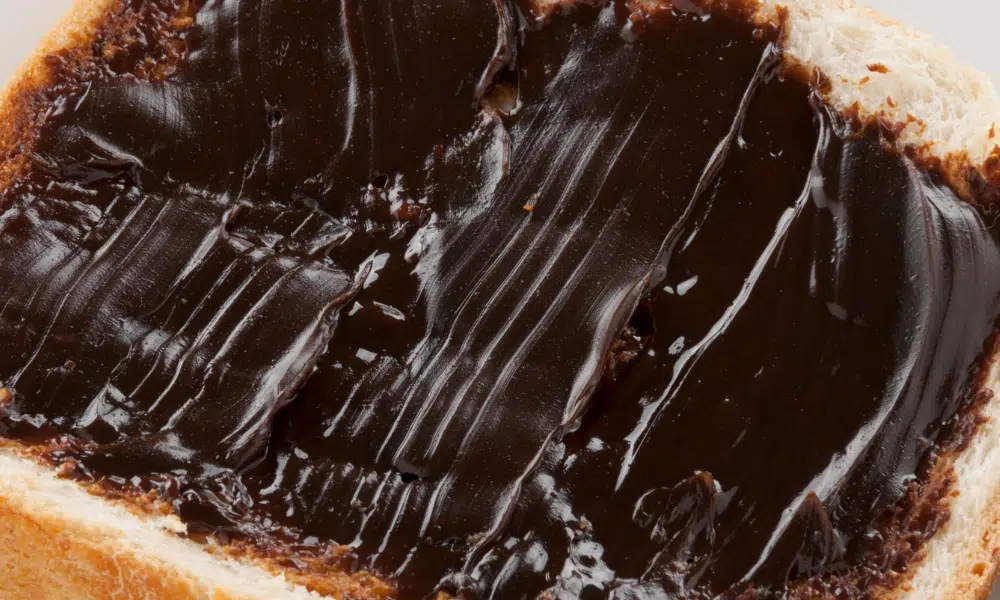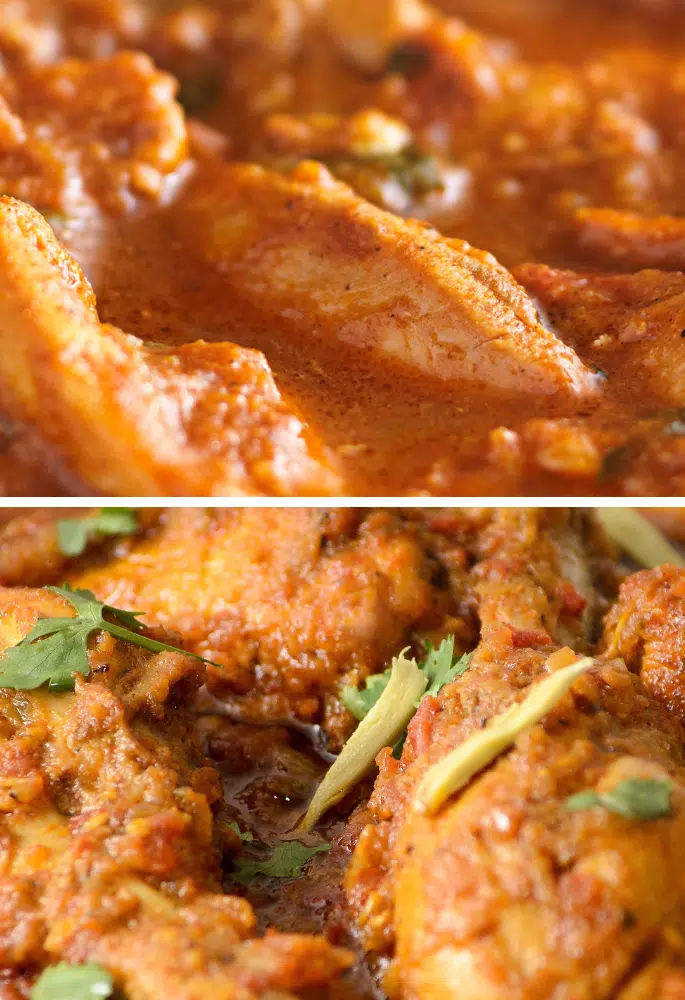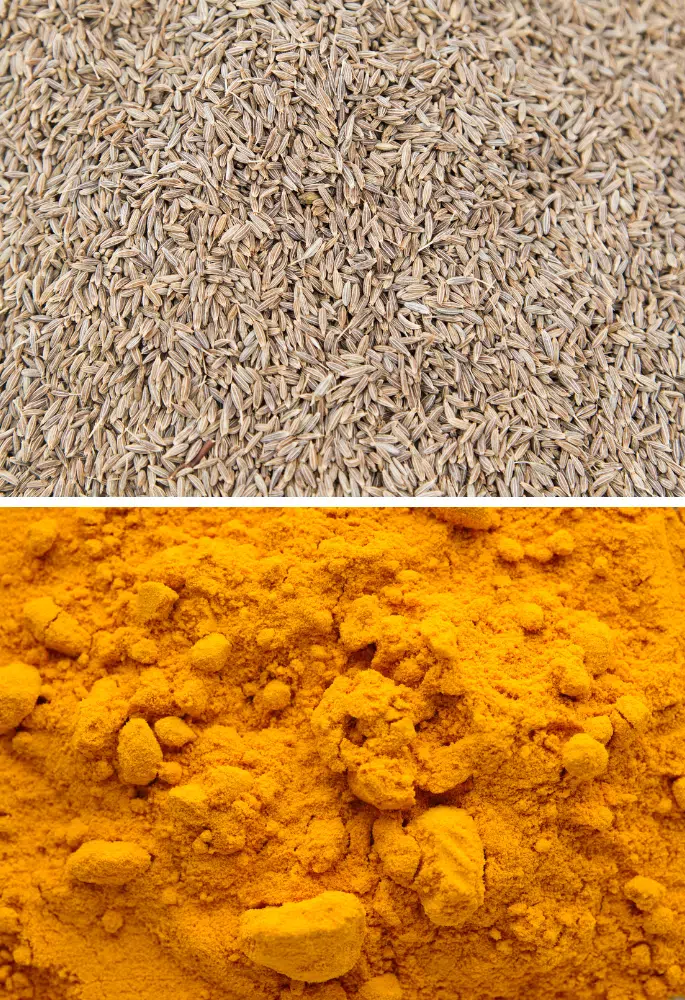Love them or hate them, Bovril and Marmite have been some of Britain’s most popular spreads for decades. They have developed quite the reputation as a controversial pantry staple. That said, some people can stomach Marmite much more than Bovril, while others cannot stand Bovril but would enjoy a Marmite sandwich.
What makes these controversial spreads so different from others? And is there really much of a difference between Bovril and Marmite in the first place?
The most significant difference between Bovril and Marmite is the base ingredients used to make the spreads. Bovril relies primarily on beef extract and a little on yeast extract, while Marmite is almost entirely made of yeast extract and very little else.
What is Bovril?
Bovril has a vibrant history dating back to the 1870s when a Scotsman, named John Lawson Johnston, needed to make beef last a journey across thousands of miles and still be as nutritious. So, using beef extract made from cattle carcasses and added protein, Bovril was invented.
Since its invention, Bovril has remained a symbol of strength in Britain.
As well as beef extract, Bovril also contains yeast extract and an array of flavourings paired with salt. Despite its strong smell reminiscent of dark chocolate, Bovril tastes like salty dried beef. There is a hint of sweetness, but for the most part, it is a very savoury spread.
Though Bovril is a thick paste, it is more similar to honey than it is peanut butter which makes it very easy to spread. However, Bovril is more commonly used as a replacement for instant beef stock.
As a large part of Bovril’s production is heavily reliant on beef extract, no Bovril is not safe for vegans. However, Bovril manufacturers have developed several Bovril products. Their most recent is a vegan-friendly Bovril made using a base of beetroot.
What is Marmite?
Though it is a widely used spread in the UK, Marmite was actually invented by a German scientist in 1902 who just so happened to be in the UK when he invented it.
Justus von Liebig wanted to use the yeast left over from brewing beer instead of letting go to waste. So he turned it into a concentrated paste and bottled it up.
Though intended to be used as a spread, Marmite has been used throughout history for medical reasons. For example, the folic acid in Marmite meant that scientists could cure cases of anaemia way back in the 1930s simply because of the natural goodness in the spread.
These nutrients come from the brewer’s yeast extract, salt, and a range of spices used to make the yeast extract more palatable.
There are very few ways to describe the taste of Marmite as it is so unique, but it is safe to say that the spread has a potent flavour. You do not need to add a lot to your toast or sandwich to taste its complex umami-ness. The spread is also very salty, which enhances that umami taste.

Because of the complex umami taste of Marmite, it works great as a flavour booster in soups, stews, and any other dish that could benefit from the salty balance.
Though Marmite is safe for vegans, vegemite is made using a combination of yeast and vegetables, whereas Marmite relies mainly on yeast. As such, Marmite is slightly sweeter and less bitter, whereas vegemite is darker in colour and has an odd meaty taste.
Similarities Between Bovril and Marmite
Many people who love Marmite also are big fans of Bovril and vice versa. This is because of the number of similarities that they share. Such as:
- Common Uses – Bovril is a much tastier replacement for instant beef stock or beef gravy, so it is commonly used in soups, pies, and stews to boost the dish’s flavour. Marmite serves a similar purpose. Though it does not replace stock or gravy, it is used as an extra seasoning in similar dishes to add a salty, umami kick.
- Distinct Flavours – There are not many comparisons for Bovril or Marmite, but you will most certainly recognise either of their flavours if you were to taste them. It is mainly the yeast extract used in both that makes them so pungent and bitter.
- Salty Deliciousness – Alongside their bitterness, both Bovril and Marmite are made using a high salt ratio. As such, part of their distinct flavour is their lip-smacking saltiness which can work as a seasoning in an array of dishes.
- Consistency – What makes Bovril and Marmite a spread by technicality is their consistency. There is a slight difference in the colour of the spreads, but they are both a cross between honey and syrup in their consistency. This makes it easier to incorporate them into their intended dishes.

Differences Between Bovril and Marmite
Many people who despise the taste of either Bovril or Marmite may argue that they are one and the same. However, we can confirm that there are some essential differences to note between the two spreads:
- Flavour – Though Bovril does include yeast extract, it is not the spread’s main ingredient. That title belongs to beef extract. Because of this significant difference, Bovril has a distinct meaty taste that distinguishes it from Marmite. Marmite has more of a bitter bite than Bovril because of the amount of yeast extract that it uses.
- Key Extracts – While Marmite was invented as a way to use leftover brewer’s yeast, Bovril was intended to help preserve and use beef. To this day, Marmite is still made using yeast extract, while Bovril uses beef extract, affecting their taste considerably.
- Uses – Bovril’s beefy taste is what makes it such a delicious drink as well as spread or seasoning. Though the meaty taste does not entirely cover up the bitterness of the yeast extract, it does make it much more enjoyable. On the other hand, Marmite would taste awful as a hot drink as it is so bitter and pungent, with little else to make the taste more tolerable.
Bovril vs Marmite: Which Wins?
It’s time to make a decision. You’re left with a choice and you can only consume one of these two sticky spreads for the rest of your life. Which are you voting for? It’s Bovril vs Marmite:
Do You Prefer Bovril or Marmite?
Bovril and Marmite FAQs
Do you still have questions about Bovril, Marmite and where they differ? Then have a look over these FAQs:
Yes, these two spreads can be used interchangeably but remember that only one is vegetarian. So, if the dish you’re serving is meant to be vegetarian then Bovril will not work.
Acacia may be a freelance writer by day, but they are a food fanatic by night. They are always trying out new recipes or finding different ways to elevate classical dishes. But their biggest culinary aim is to educate others on the basics of the kitchen so that they too can enjoy delicious food.












I am now enlightened of the difference between the two I use both of them but I prefer Marmite mostly.Thank you
I have a jar of Bovril in front of me. It is yeast extract and is vegetarian.
Wow! Where are you getting that Bovril? Here are the ingredients for the Bovril brand in the UK:
“Beef broth (50%) [water, beef bones], yeast extract (27%) [contains BARLEY, WHEAT, OAT, RYE], salt, water, colour (ammonia caramel), corn starch, beef powder (1%), flavourings (contain CELERY), flavour enhancers (disodium inosinate, disodium guanylate), acid (lactic acid). May contain milk, egg, soy and mustard”